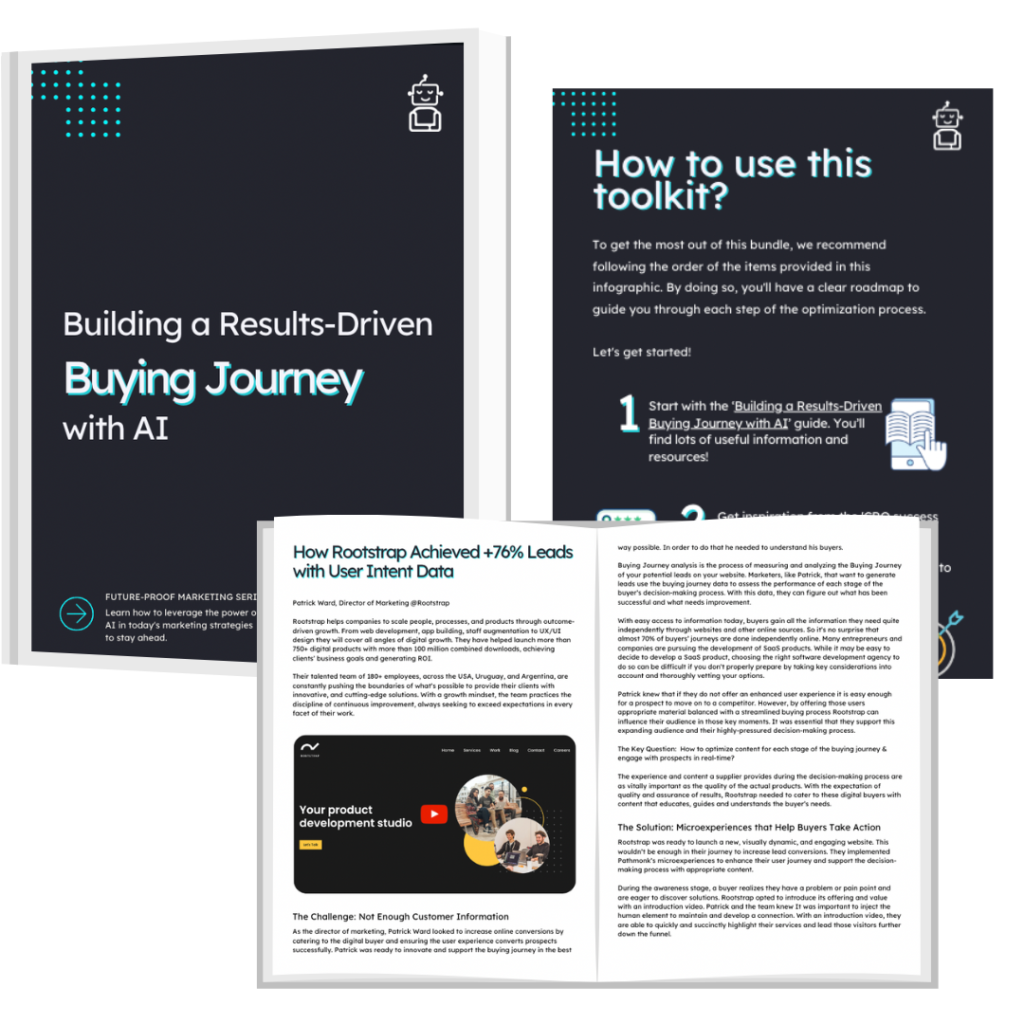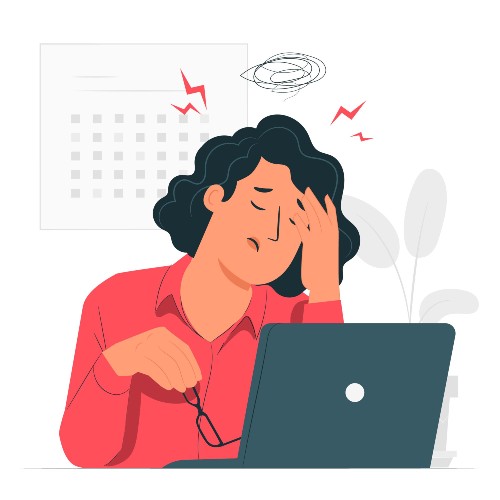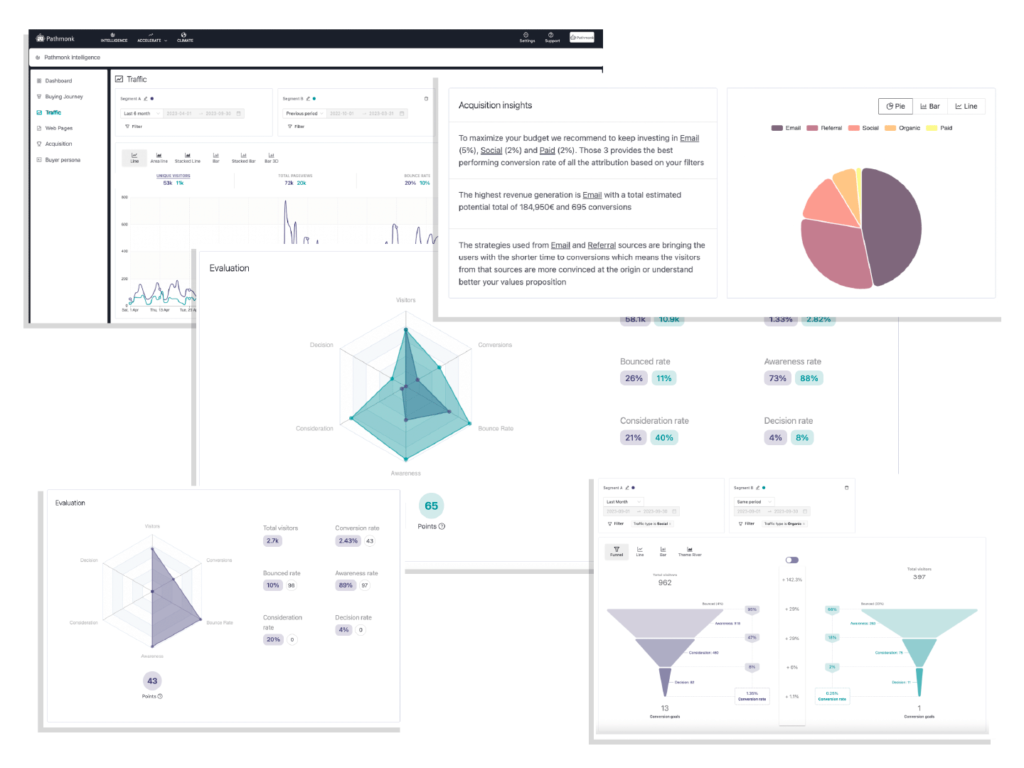What are the Most Common Pain Points of B2B Buyers?


Understanding customer journey pain points is a crucial part of leveraging better sales throughout and as a result of the B2B process. Journey mapping is a common principle used in conjunction with B2B and applying an understanding of the pain points your B2B buyers may experience in this context is one of the best ways to get the most out of the sales process.
Whether you’re a small business owner or you work in marketing, ensure that you employ a thorough understanding of your customers’ pain points when you utilize journey mapping. If you aren’t sure how to do so, then read on. This article goes into depth on the importance of pain points in the B2B journey and how you can identify them if you aren’t already aware of them.
Free AI-Powered Buying Journey Toolkit
Learn how to optimize your buying journey and speed up your revenue with top strategies and invaluable resources.

What Are The Pain Points of B2B Buyers?
Journey mapping is a common practice in customer experience management and growth strategy for B2B vendors. Ideally, journey mapping should be utilized by all vendors as part of their growth strategy, but it’s of particular importance for B2B vendors and businesses. B2B growth and best practice are different from selling to the general public, so it’s appropriate to employ different strategies.
The customer journey in B2B maps out the process of a transaction from beginning to end. It’s often helpful to understand the customer journey because the sales process in B2B is far more complex than when one is selling to the general public. B2B vendors have far more at stake and are more likely to be far more selective in who they work with and why.
In a B2B context, pain points can be experienced by the buyer in a number of ways. It’s important to understand common buyer pain points throughout the B2B journey in order to improve the customer experience. This knowledge can help you to improve your own experience as a B2B buyer by knowing what to avoid, and it can also help vendors enhance the experience of their customers in future transactions.
For example, one common pain point from the buyer’s perspective in a B2B context is that their vendor provides poor or insufficient service. Both the buyer and seller in B2B can leverage this knowledge to achieve a better experience. Generally speaking, B2B buyers are always motivated by their pain points.
How to Identify Customer Journey Pain Points
Understanding pain points throughout the customer journey is an important part of growth marketing. By addressing the pain points of buyers, it’s possible to provide them with a better service and seriously boost your conversion rate as a result. Using this as part of your growth strategy may be challenging initially, but the results can be incredible if you stick with it.
B2B Buyers are almost always motivated by pain. Whether they decide to change vendor or service, it’s usually because they were dissatisfied with whatever their previous vendor provided them with, and not because they are particularly interested in the new service. Understanding this is a crucial part of discovering the pain points of B2B buyers more generally.
Changing vendors is usually costly for buyers. As such, they don’t do so lightly. This is why tackling the most common pain points of B2B buyers is so important for conversion. If a B2B buyer can’t see why a new vendor or solution can help address their pain points, they’re likely to stick with their old pain points.
Pain points can also be different from buyer to buyer. Pain points are also varied throughout the B2B customer journey. You might notice that one buyer has a particular pain point at the first phase of the customer journey, while another has issues towards the end or just before purchasing. This is due to a variety of factors. The nature of the business that the buyer operates is often crucial. As such, it’s very useful to understand specific pain points for buyers within a particular industry or sector.
Talk to the B2B Buyers Directly
The best and most direct way to identify the pain points of a buyer is by asking them directly about their experiences. Otherwise, you’re essentially making educated guesses. While there are certain pain points that are common to almost all B2B buyers, others may be individual from vendor to vendor—as such, knowing which questions to ask buyers and when is often an invaluable part of identifying their pain points.
When a B2B buyer contacts you, asking them why is often critically important. The buyer can often describe poor experiences with a previous vendor or being generally dissatisfied with the service they received. This is a good rule of thumb for conversions, too. A B2B buyer wants the best experience from a vendor in order to be able to provide the best experience for their clients or customers, however possible. An unreliable vendor may impact their ability to provide a positive user experience.
Vendor Dissatisfaction
If a B2B buyer isn’t happy with their vendors, it may impact their business. Much of this comes down to a balancing act, though. Changing vendors can be costly and logistically challenging for B2B buyers dependent on a particular supply. A B2B buyer might not have many alternatives when changing vendors if they are in a niche industry.
Asking the B2B buyer about specific issues with current vendors is a fantastic way to identify their pain points. A B2B buyer generally knows exactly why they’re dissatisfied with the current vendor and how that vendor could improve upon their performance. Asking a buyer what they’re unhappy with can also help sellers to better the service they provide to buyers.
Finally, asking a B2B buyer how their current vendor impacts the buyer’s operations and business is a great way to identify the most specific pain points. By understanding how the buyer’s own business operates, it’s possible to see exactly how an unreliable or dissatisfying vendor is disrupting their company. This process could potentially be partially automated for greater efficiency, but talking directly with B2B buyers provides a more personalized experience.

B2B Customer Pain Points Examples
Probing for customer journey pain points can take time, but it’s worth it. Doing so is essentially a type of conversion marketing, and it’s the best way to directly address B2B buyers and their concerns in order to provide a relevant service. However, it’s not always necessary. When you already know how to identify customer pain points, you can address them. Also, there are some common pain points for B2B buyers that almost universally drive them to seek new vendors. Here are some of the most common:
Bad Service from the Current Vendor
If a B2B buyer experiences service from their current vendor as poor or dissatisfactory, they’re almost certainly considering jumping ship. Poor service from an unreliable vendor can impact a buyer’s own operations in an incredible number of ways. This can be due to inefficient communication, missing deadlines, unreliable supplies, and more.
Sometimes, the current vendor doesn’t click with the B2B buyer and provides them with a service that they enjoy using. This might sound subjective, but it’s seriously important for retaining the buyer. Unless they are particularly loyal, the B2B buyer needs to be led through the sales funnel every time they make a new purchase or transaction with their current vendor. If the buyer isn’t satisfied, they’re very unlikely to be ‘sold’ on the product that they’re already putting their money towards.
Inefficient or Disjointed Operating Systems
This is one of the biggest customer pain points examples. Many B2B buyers use IT and software as part of their operations, even though they might not work in tech. For many laypeople, using these systems can be a cause of incredible frustration, especially if the systems aren’t integrated into a single piece of software or solution. IT systems can often look intimidating and complicated, especially for small business owners who don’t generally spend a lot of time working on a computer.
A surprising number of businesses still write up manual spreadsheets by hand and track their sales on paper. Many B2B buyers are very interested in a more elegant and convenient solution for tracking their operations by hand. This is especially true if it can be offered in the package of a piece of software that is easy to use and works as a single system.
Too Many Vendors
Some B2B buyers have to work with several vendors to keep things afloat, and this can be a great source of stress. Many buyers would prefer to work with fewer vendors who can provide them with a wider range of products or services. If a B2B buyer sees one vendor that offers what three of their current vendors do, they are likely going to be very tempted to switch to the new vendor.
There are customer journey pain points throughout the entire B2B journey for B2B buyers. Identifying these can help a B2B buyer obtain better service and a greater sense of satisfaction with their vendor, as well as helping them operate more efficiently.
Intuitive Cookieless Analytics for Your Web
Understand your customer journey, find drop-offs, and receive actionable insights with AI.






